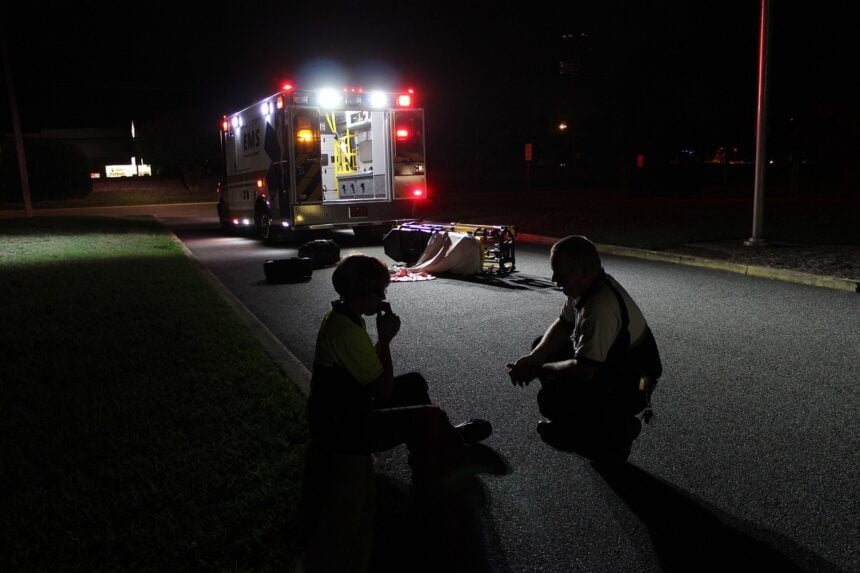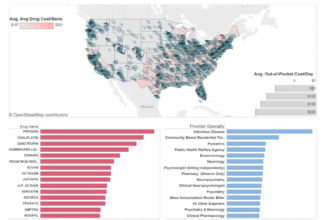We have talked a lot about mental health these days. An estimated 43.8 million people have at least one mental illness. That is about one in five adults in the United States.
There are a lot of reasons that mental illness has become so prevalent. One cause of mental health issues is domestic violence. One study found that between 55% and 92% of women that have been victims of domestic violence have PTSD, compared to only 10.4% of the general population.
It is important to be aware of signs that someone may be likely to commit domestic violence, so you can avoid the mental health issues they create. Of course, there are ways to manage PTSD if you have already been a victim of domestic violence. Keep reading to learn more.
Warning Signs Someone May Commit Domestic Violence
One of the main reasons for domestic violence being such a serious problem in the US (and the rest of the world) is that it often remains unseen and unreported, allowing such harmful behavioral patterns to continue for months and years. This is partly due to the fact that instances of domestic violence happen in private, hidden to the public. However, there’s also the issue with victims of domestic violence getting manipulated into thinking that what’s being done to them is normal and that they shouldn’t seek help for their situation. Both of these factors create a particularly insidious loop that perpetuates the existence of this problem and prevents it from being solved. There are ways to get help if you are a victim of domestic violence, but it is important to be aware of the risks before it occurs.
As is the case with all such issues, knowledge and awareness are the key to coming up with an effective long-term solution, which is why we’ll now give you an overview of the main ways you can recognize domestic abuse in its different forms, regardless of whether you are a potential victim or you know a person who may be getting subjected to such abuse.
Recognizing abusive people
We will start with telling you about some of the most typical character traits present in abusive people. Though noticing any of the following red flags in a given person do not guarantee that said person is physically or emotionally abusive, they significantly increase the chance of this being the case.
Dramatic and frequent mood swings
The majority of abusive people are characterized by lacking the ability to control their emotions and impulses. For this reason, if someone tends to frequently have sudden mood swings over minor things, especially if this leads to angry outbursts and other hostile behavior, the likelihood of that person being abusive, be it physically or emotionally, increases significantly.
Unrealistic expectations
People who are perfectionists towards minor details and have unrealistically high expectations from those around them are generally more likely to be abusive. Such people would often get angry at and disappointed by others, when their expectations from them aren’t met, which could sometimes lead to abusive behavior. A typical example of this is when a parent has very high expectations from his/her child and who then goes on to get angry at and overly-critical of the kid if the expectations aren’t fulfilled.
Substance abuse
Substance abuse is another major contributing factor to domestic abuse, as it severely impacts a person’s ability to control their impulses and keep their emotions in check. Furthermore, abusers would oftentimes excuse their harmful behavior with their use of alcohol or drugs, saying that they aren’t in control of their actions while under the effects of such substances.
However, it must be said that, most of the time, alcohol and drugs won’t make a person abusive, if he or she isn’t already prone to displaying such behavior. Furthermore, even if one’s control is inhibited after alcohol consumption or drug use, they are in full control prior to that, and it is their decision to let themselves fall under the effects of the substance.
Knowing when you are being abused
Abusive people, especially abusive intimate partners, are usually very good at manipulating their victims into believing that they aren’t being mistreated. This is also known as “gaslighting”, and it is one of the reasons why the problem with domestic violence can be so insidious – because the victims are often unaware that what’s happening isn’t okay.
Obviously, this is mainly related to emotional rather than physical violence, because the latter is much easier to recognize as actual abuse. However, emotional abuse can often be a precursor to physical violence, so it’s important to learn to recognize the signs.
The following are several questions that can help you determine if your intimate partner is being emotionally abusive towards you:
- Is your partner constantly being critical of you, your appearance, intelligence, emotions, tastes, or of the other people who are close to you?
- Does your partner use demeaning names and terms when referring to you?
- Is your partner constantly saying that you are lucky to be with them and that you can never find anyone better?
- Do they tend to frequently make fun of you and put you down?
- Does your intimate partner frequently yell at you?
- Do you feel like you are walking on eggshells when around your partner?
Even if you answered with “Yes” to only one or two of those questions, there’s a high chance that the person you’re currently with is emotionally abusive, and you should probably not be with them.
Recognizing signs of abuse in other people
Finally, it’s also important to be able to notice the signs of both mental and physical abuse in people close to you, such as friends and family members. This can be tricky when talking about emotional abuse, because it is much more covert. However, if you’ve noticed that a person you know is showing signs of depression and anxiety that coincide with the start of a new relationship, and if that person has become more distant and unwilling to meet up with his or her friends, then there’s a chance that their new partner might be emotionally abusive towards them.
As for physical abuse, the signs here are much more overt and obvious. If you’ve started noticing any unusual bruises, marks, bites, and other injuries in a person that you know, those could be the result of domestic violence, especially if the person is trying to keep them hidden behind heavy makeup and unusual clothing choices. It may help to inquire about such injuries and then paying attention to the reaction and answer. If the person responds nervously and tries very hard to convince you that the injury is from an everyday accident, then this could be a red flag signifying that they might be victims of domestic abuse.
Being informed is the best way to help prevent domestic violence
Domestic violence is truly a dreadful problem and one that’s very difficult to fight due to its insidious nature, yet simply being equipped with the necessary information is already bringing us a step closer to its solution.
Whether you are a victim of domestic violence, know someone who may be struggling with it, or simply want to have practical knowledge that can help you recognize and prevent this type of destructive and harmful behavioral pattern, it can be of great help to enroll in a completely anonymous domestic violence class, that will teach you in much more detail about all the red flags we talked about in this post. Remember, simply knowing what to look out for can make a huge difference, so make sure to stay informed!









